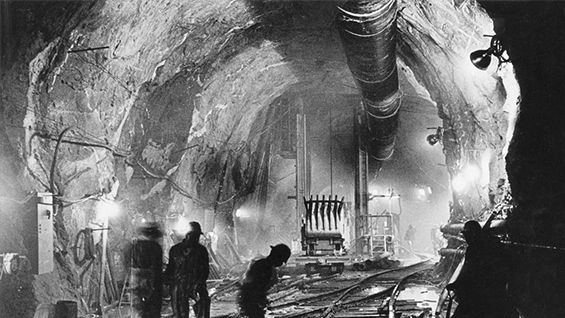COOPERMADE: NYC Tap Water
Bringing clean water to a city as large as New York was quite the undertaking in the early 1800s, and continues to bring fresh challenges to city planners today. Two engineers from The Cooper Union, “a mechanic of New York” named Peter Cooper, and Civil Engineering graduate George Fox CE’40, made major contributions to the past and future of this massive public works project.
Peter Cooper and the Croton Aqueduct

In 1840, Peter Cooper was elected alderman of the Common Council of New York City. At the time the city’s only supply of water came from springs and wells operated by the Aaron Burr-founded Manhattan Company (yes, that Aaron Burr). The system had become unreliable and contaminated and the city sought new sources of fresh water for residents. The Council inspected several possible sources before deciding on the Croton River, and construction on the Croton Aqueduct began in 1837. Peter Cooper led the laying of some 160 miles of pipes throughout the city, actively supervising the process and creating standards to ensure its effectiveness. "I made it my business, as fast as the pipes began to arrive," Cooper later wrote, "to be very particular that a process of testing the strength of each pipe should be made, to be sure that it was perfect.” In October 1842, the city held a parade the stretched seven miles through the streets in celebration of the city’s, and Peter Cooper’s, great achievement.
NYC’s Third Water Tunnel

As New York grew, so did its needs for clean water to serve its businesses and residences. In 1917 and 1936, the city had activated two massive water tunnels to do the job, but in 1954, city leaders realized that these tunnels would eventually need inspection and repairs. To handle the water supply in the interim, they decided to construct a third tunnel, and Cooper Civil Engineering alum Geroge A. Fox was hired to lead the project. After graduating from The Cooper Union in 1940, Fox became a nationally recognized expert in civil engineering who led several massive infrastructure projects in New York and New Jersey, including roads, bridges, and tunnels. NYC’s Third Water Tunnel was by far the most ambitious of these projects, beginning construction under Fox’s leadership in 1970, and currently projected to be completed in 2025. The active portion of “Tunnel No. 3” is constructed in bedrock 250 – 800 feet below ground, and runs thirteen miles from Hillview Reservoir in Yonkers, across Manhattan, and under the East River to Astoria Queens. The portions of the tunnel currently under construction bring its total length to 60 miles, making it the longest underground tunnel in the United States.





